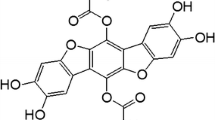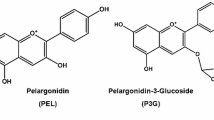Abstract
GDX-365, is the main fraction of black ginseng comprising protopanaxatriol-type rare ginsenosides (ginsenosides Rg3, Rk1, and Rg5). High mobility group box 1 (HMGB1) is known as a late mediator of sepsis. There are no reported research on the antiseptic properties of GDX-365. The suppression of HMGB1 release and restoration of vascular barrier integrity have emerged as promising therapeutic approaches for sepsis management. In this study, we looked at how GDX-365 affected the survival rate and HMGB1-mediated septic responses in a mouse sepsis model. The mice were given GDX-365 following the HMGB1 challenge. Using sepsis mouse model by cecal ligation and puncture (CLP) and human umbilical vein endothelial cells (HUVECs), measurements of permeability, and septic animal mortality, the antiseptic activity of GDX-365 was evaluated under septic conditions. We discovered that GDX-365 greatly decreased the release of HMGB1 from CLP-induced release of HMGB1 in mice and Lipopolysaccharide-activated HUVECs. Inhibiting hyper-permeability in the animals and restoring HMGB1-mediated vascular disruption were other effects of GDX-365. Additionally, GDX-365 therapy decreased in vivo sepsis-related mortality. Our findings imply that GDX-365 is effective in the treatment of sepsis since it lowers HMGB1 release and septic mortality in vivo.
Similar content being viewed by others
References
Russell, J. A. (2006) Management of sepsis. N. Engl. J. Med. 355: 1699–1713.
Dolmatova, E. V., K. Wang, R. Mandavilli, and K. K. Griendling (2021) The effects of sepsis on endothelium and clinical implications. Cardiovasc. Res. 117: 60–73.
Zhou, W., J. Oh, L. Wonhwa, S. Kwak, W. Li, A. G. Chittiboyina, D. Ferreira, M. T. Hamann, S. H. Lee, J.-S. Bae, and M. Na (2014) The first cyclomegastigmane rhododendroside A from Rhododendron brachycarpum alleviates HMGB1-induced sepsis. Biochim. Biophys. Acta. 1840: 2042–2049.
Huang, W., Y. Tang, and L. Li (2010) HMGB1, a potent proinflammatory cytokine in sepsis. Cytokine 51: 119–126.
Wang, H., O. Bloom, M. Zhang, J. M. Vishnubhakat, M. Ombrellino, J. Che, A. Frazier, H. Yang, S. Ivanova, L. Borovikova, K. R. Manogue, E. Faist, E. Abraham, J. Andersson, U. Andersson, P. E. Molina, N. N. Abumrad, A. Sama, and K. J. Tracey (1999) HMG-1 as a late mediator of endotoxin lethality in mice. Science 285: 248–251.
Bae, J.-S. (2012) Role of high mobility group box 1 in inflammatory disease: focus on sepsis. Arch. Pharm. Res. 35: 1511–1523.
Yang, H., M. Ochani, J. Li, X. Qiang, M. Tanovic, H. E. Harris, S. M. Susarla, L. Ulloa, H. Wang, R. DiRaimo, C. J. Czura, H. Wang, J. Roth, H. S. Warren, M. P. Fink, M. J. Fenton, U. Andersson, and K. J. Tracey (2004) Reversing established sepsis with antagonists of endogenous high-mobility group box 1. Proc. Natl Acad. Sci. U. S. A. 101: 296–301.
Qi, L.-W., C.-Z. Wang, and C.-S. Yuan (2011) Isolation and analysis of ginseng: advances and challenges. Nat. Prod. Rep. 28: 467–495.
An, M.-Y., S. R. Lee, H.-J. Hwang, J.-G. Yoon, H.-J. Lee, and J. A. Cho (2021) Antioxidant and anti-inflammatory effects of Korean black ginseng extract through ER stress pathway. Antioxidants (Basel) 10: 62.
Huang, L., H.-J. Li, and Y.-C. Wu (2023) Processing technologies, phytochemistry, bioactivities and applications of black ginseng-a novel manufactured ginseng product: a comprehensive review. Food Chem. 407: 134714.
Metwaly, A. M., Z. Lianlian, H. Luqi, and D. Deqiang (2019) Black ginseng and its saponins: preparation, phytochemistry and pharmacological effects. Molecules 24: 1856.
Lee, D.-K., S. Park, N. P. Long, J. E. Min, H. M. Kim, E. Yang, S. J. Lee, J. Lim, and S. W. Kwon (2020) Research quality-based multivariate modeling for comparison of the pharmacological effects of black and red ginseng. Nutrients 12: 2590.
Lee, M. R., B. S. Yun, O. H. In, and C. K. Sung (2011) Comparative study of Korean white, red, and black ginseng extract on cholinesterase inhibitory activity and cholinergic function. J. Ginseng. Res. 35: 421–428.
Zhu, Y., C. Zhu, H. Yang, J. Deng, and D. Fan (2020) Protective effect of ginsenoside Rg5 against kidney injury via inhibition of NLRP3 inflammasome activation and the MAPK signaling pathway in high-fat diet/streptozotocin-induced diabetic mice. Pharmacol. Res. 155: 104746.
Zhu, Y., H. Yang, J. Deng, and D. Fan (2021) Ginsenoside Rg5 improves insulin resistance and mitochondrial biogenesis of liver via regulation of the Sirt1/PGC-1α signaling pathway in db/db mice. J. Agric. Food Chem. 69: 8428–8439.
Lee, S. M. (2014) Anti-inflammatory effects of ginsenosides Rg5, Rz1, and Rk1: inhibition of TNF-α-induced NF-κB, COX-2, and iNOS transcriptional expression. Phytother. Res. 28: 1893–1896.
Chen, C., Q. Lv, Y. Li, and Y.-H. Jin (2021) The anti-tumor effect and underlying apoptotic mechanism of ginsenoside Rk1 and Rg5 in human liver cancer cells. Molecules 26: 3926.
He, B.-C., J.-L. Gao, X. Luo, J. Luo, J. Shen, L. Wang, Q. Zhou, Y.-T. Wang, H. H. Luu, R. C. Haydon, C.-Z. Wang, W. Du, C.-S. Yuan, T.-C. He, and B.-Q. Zhang (2011) Ginsenoside Rg3 inhibits colorectal tumor growth through the down-regulation of Wnt/β-catenin signaling. Int. J. Oncol. 38: 437–445.
Liu, X., X. Mi, Z. Wang, M. Zhang, J. Hou, S. Jiang, Y. Wang, C. Chen, and W. Li (2020) Ginsenoside Rg3 promotes regression from hepatic fibrosis through reducing inflammation-mediated autophagy signaling pathway. Cell Death Dis. 11: 454.
Leung, K. W. and A. S. Wong (2010) Pharmacology of ginsenosides: a literature review. Chin. Med. 5: 20.
Murugesan, M., R. Mathiyalagan, V. Boopathi, B. M. Kong, S.-K. Choi, C.-S. Lee, D. C. Yang, S. C. Kang, and T. Thambi (2022) Production of minor ginsenoside CK from major ginsenosides by biotransformation and its advances in targeted delivery to tumor tissues using nanoformulations. Nanomaterials (Basel) 12: 3427.
Popovich, D. G. and D. D. Kitts (2002) Structure-function relationship exists for ginsenosides in reducing cell proliferation and inducing apoptosis in the human leukemia (THP-1) cell line. Arch. Biochem. Biophys. 406: 1–8.
Chen, D.-J., H.-M. Liu, S.-F. Xing, and X.-L. Piao (2014) Cytotoxic activity of gypenosides and gynogenin against non-small cell lung carcinoma A549 cells. Bioorg. Med. Chem. Lett. 24: 186–191.
Kim, J.-E., W. Lee, S. Yang, S.-H. Cho, M.-C. Baek, G.-Y. Song, and J.-S. Bae (2019) Suppressive effects of rare ginsenosides, Rk1 and Rg5, on HMGB1-mediated septic responses. Food Chem. Toxicol. 124: 45–53.
Zheng, M.-M., F.-X. Xu, Y.-J. Li, X.-Z. Xi, X.-W. Cui, C.-C. Han, and X.-L. Zhang (2017) Study on transformation of ginsenosides in different methods. Biomed. Res. Int. 2017: 8601027.
Parshikov, I. A. and J. B. Sutherland (2015) Biotransformation of steroids and flavonoids by cultures of Aspergillus niger. Appl. Biochem. Biotechnol. 176: 903–923.
Vo, H. T., J. Y. Cho, Y.-E. Choi, Y.-S. Choi, and Y.-H. Jeong (2015) Kinetic study for the optimization of ginsenoside Rg3 production by heat treatment of ginsenoside Rb1. J. Ginseng Res. 39: 304–313.
Kim, C., S. H. Ryu, N. Kim, W. Lee, and J.-S. Bae (2022) Renal protective effects of Sparstolonin B in a mouse model of sepsis. Biotechnol. Bioprocess Eng. 27: 157–162.
Lee, I.-C. and J.-S. Bae (2022) Hepatic protective effects of Jujuboside B through the modulation of inflammatory pathways. Biotechnol. Bioprocess Eng. 27: 336–343.
Song, Y., K.-I. Joo, and J. H. Seo (2021) Evaluation of mechanical and thermal properties of hydroxyapatite-levan composite bone graft. Biotechnol. Bioprocess Eng. 26: 201–207.
Buras, J. A., B. Holzmann, and M. Sitkovsky (2005) Animal models of sepsis: setting the stage. Nat. Rev. Drug Discov. 4: 854–865.
Lee, W., S.-K. Ku, Y.-M. Lee, and J.-S. Bae (2014) Anti-septic effects of glyceollins in HMGB1-induced inflammatory responses in vitro and in vivo. Food Chem. Toxicol. 63: 1–8.
Qin, Y.-H., S.-M. Dai, G.-S. Tang, J. Zhang, D. Ren, Z.-W. Wang, and Q. Shen (2009) HMGB1 enhances the proinflammatory activity of lipopolysaccharide by promoting the phosphorylation of MAPK p38 through receptor for advanced glycation end products. J. Immunol. 183: 6244–6250.
Sun, C., C. Liang, Y. Ren, Y. Zhen, Z. He, H. Wang, H. Tan, X. Pan, and Z. Wu (2009) Advanced glycation end products depress function of endothelial progenitor cells via p38 and ERK 1/2 mitogen-activated protein kinase pathways. Basic Res. Cardiol. 104: 42–49.
Palumbo, R., B. G. Galvez, T. Pusterla, F. De Marchis, G. Cossu, K. B. Marcu, and M. E. Bianchi (2007) Cells migrating to sites of tissue damage in response to the danger signal HMGB1 require NF-kappaB activation. J. Cell Biol. 179: 33–40.
Lee, W., S. Choo, H. Sim, and J.-S. Bae (2021) Inhibitory activities of ononin on particulate matter-induced oxidative stress. Biotechnol. Bioprocess Eng. 26: 208–215.
Sim, H., Y. Noh, S. Choo, N. Kim, T. Lee, and J.-S. Bae (2021) Suppressive activities of fisetin on particulate matter-induced oxidative stress. Biotechnol. Bioprocess Eng. 26: 568–574.
Erlandsson Harris, H. and U. Andersson (2004) Mini-review: the nuclear protein HMGB1 as a proinflammatory mediator. Eur. J. Immunol. 34: 1503–1512.
Jung, B., H. Kang, W. Lee, H. J. Noh, Y.-S. Kim, M.-S. Han, M.-C. Baek, J. Kim, and J.-S. Bae (2016) Anti-septic effects of dabrafenib on HMGB1-mediated inflammatory responses. BMB Rep. 49: 214–219.
Min, G., S.-K. Ku, M. S. Park, T.-J. Park, H.-S. Lee, and J. S. Bae (2016) Anti-septic effects of pelargonidin on HMGB1-induced responses in vitro and in vivo. Arch. Pharm. Res. 39: 1726–1738.
Kim, T.-W., E.-H. Joh, B. Kim, and D.-H. Kim (2012) Ginsenoside Rg5 ameliorates lung inflammation in mice by inhibiting the binding of LPS to toll-like receptor-4 on macrophages. Int. Immunopharmacol. 12: 110–116.
Wang, J., L. Zeng, Y. Zhang, W. Qi, Z. Wang, L. Tian, D. Zhao, Q. Wu, X. Li, and T. Wang (2022) Pharmacological properties, molecular mechanisms and therapeutic potential of ginsenoside Rg3 as an antioxidant and anti-inflammatory agent. Front. Pharmacol. 13: 975784.
Li, W., X. Zhang, M. Ding, Y. Xin, Y. Xuan, and Y. Zhao (2019) Genotoxicity and subchronic toxicological study of a novel ginsenoside derivative 25-OCH3-PPD in beagle dogs. J. Ginseng Res. 43: 562–571.
Bogatcheva, N. V. and A. D. Verin (2008) The role of cytoskeleton in the regulation of vascular endothelial barrier function. Microvasc. Res. 76: 202–207.
Lee, K. H. (2000) Research and future trends in the pharmaceutical development of medicinal herbs from Chinese medicine. Public Health Nutr. 3: 515–522.
Ghamari, F., S. M. Ghaffari, M. Salami, F. Moosavi-Movahedi, F. Farivar, A. Johari, A. A. Saboury, J. M. Chobert, T. Haertlé, and A. A. Moosavi-Movahedi (2013) Synergic study of α-glucosidase inhibitory action of aloin and its antioxidant activity with and without camel β-casein and its peptides. Protein Pept. Lett. 20: 607–612.
Acknowledgements
This research was supported by a grant of the Korea Health Technology R&D Project through the Korea Health Industry Development Institute (KHIDI), funded by the Ministry of Health & Welfare, Republic of Korea (grant number: HI15C0001), and by the National Research Foundation of Korea (NRF) grant funded by the Korea government (MSIT) (NRF-2020R1A2C1004131, 2017R1A5A2015385).
Author information
Authors and Affiliations
Corresponding authors
Ethics declarations
The authors declare no conflict of interest.
Neither ethical approval nor informed consent was required for this study.
Additional information
Publisher’s Note Springer Nature remains neutral with regard to jurisdictional claims in published maps and institutional affiliations.
Rights and permissions
About this article
Cite this article
Baek, DH., Kim, G.O., Choi, HJ. et al. Inhibitory Activities of GDX-365 on HMGB1-mediated Septic Responses. Biotechnol Bioproc E 28, 623–631 (2023). https://doi.org/10.1007/s12257-023-0043-2
Received:
Revised:
Accepted:
Published:
Issue Date:
DOI: https://doi.org/10.1007/s12257-023-0043-2




